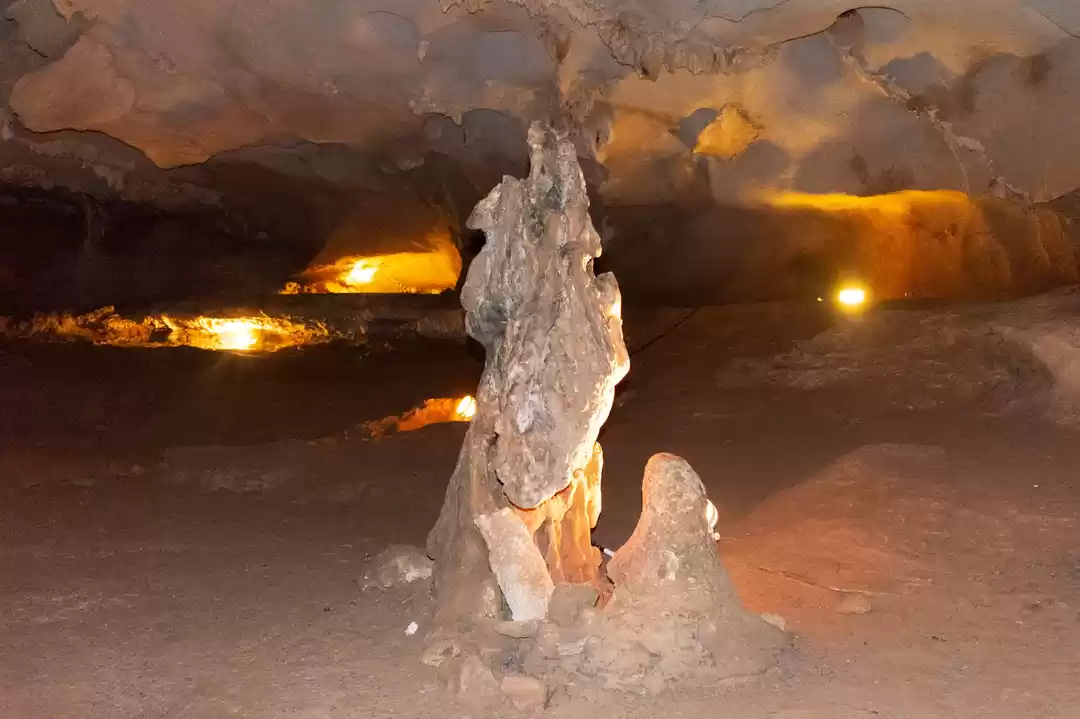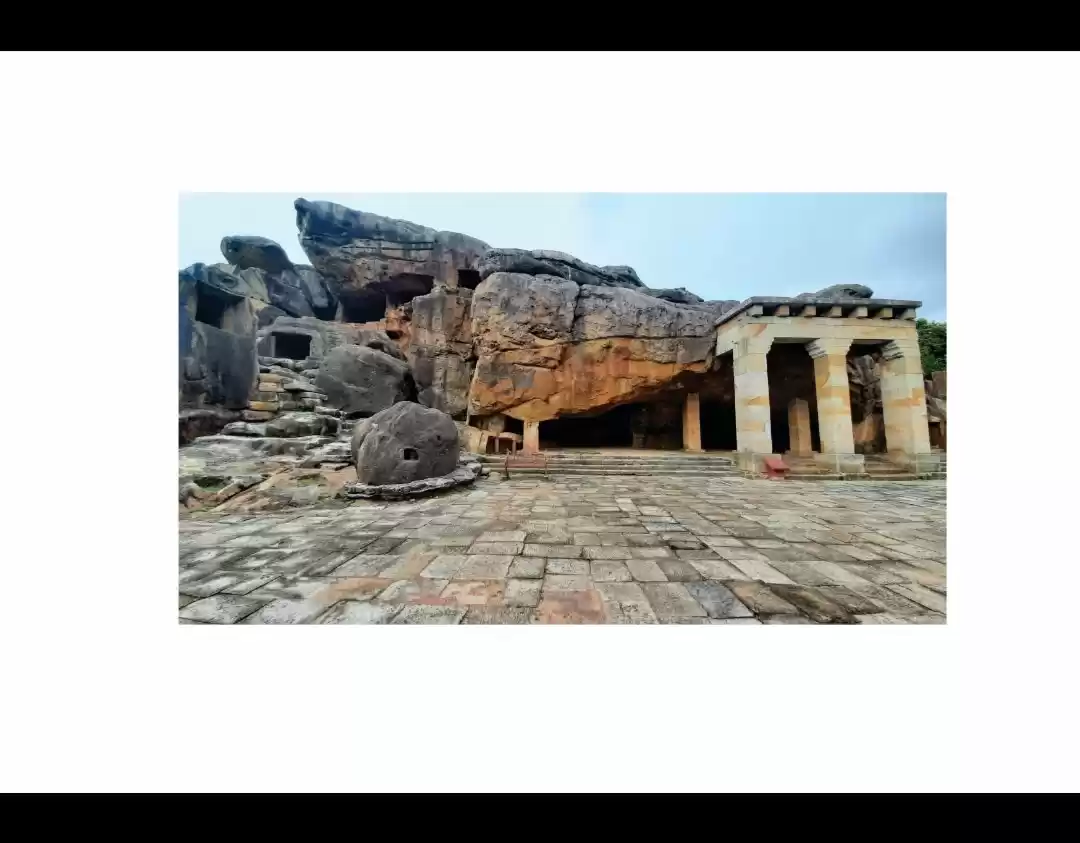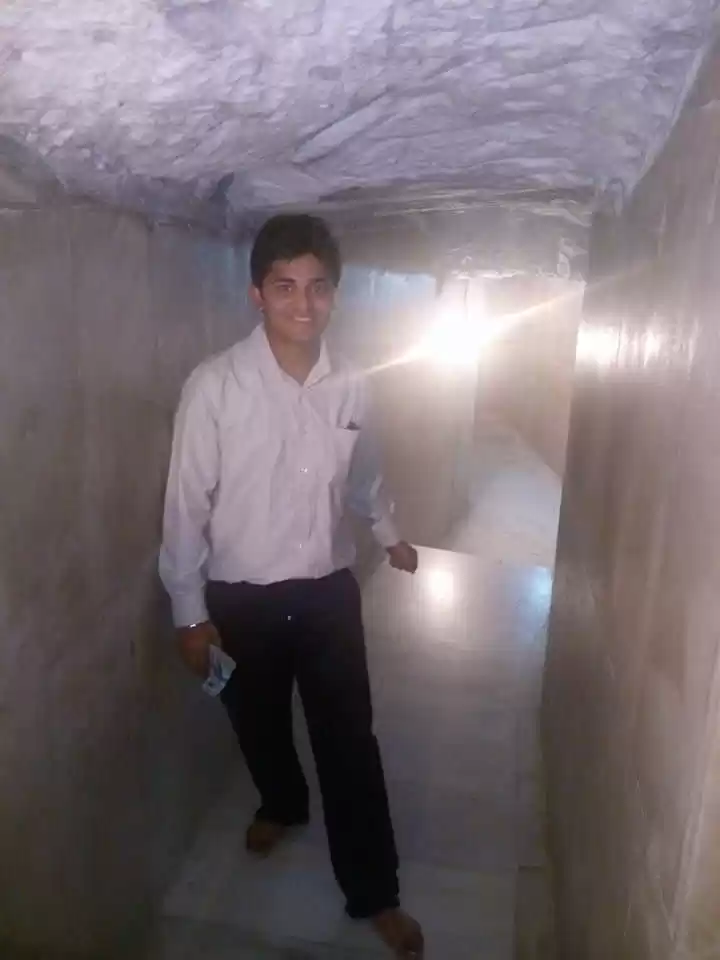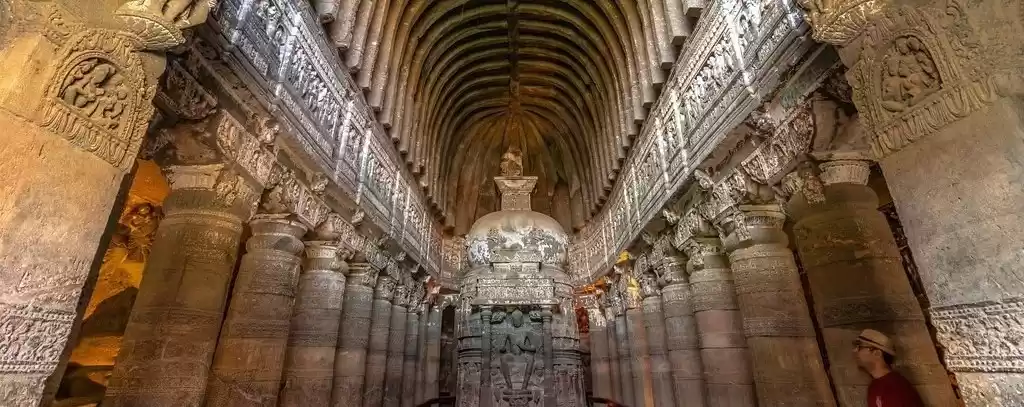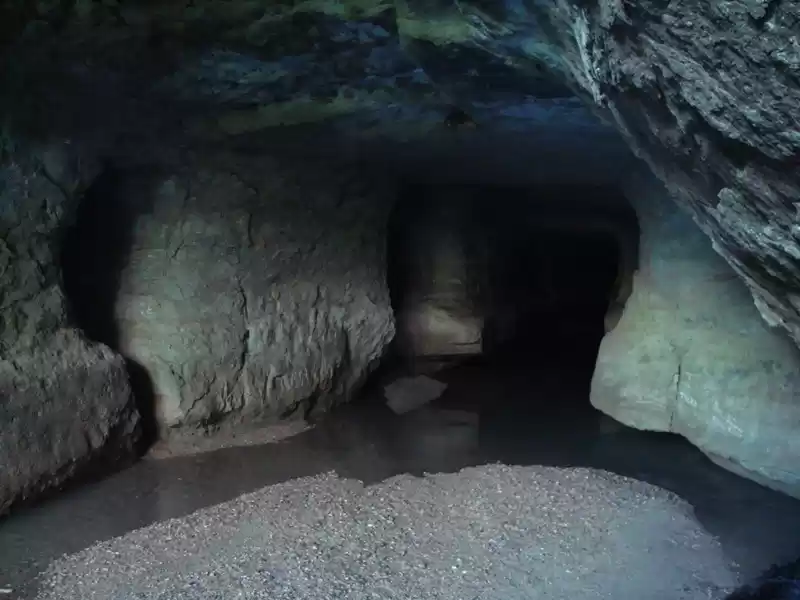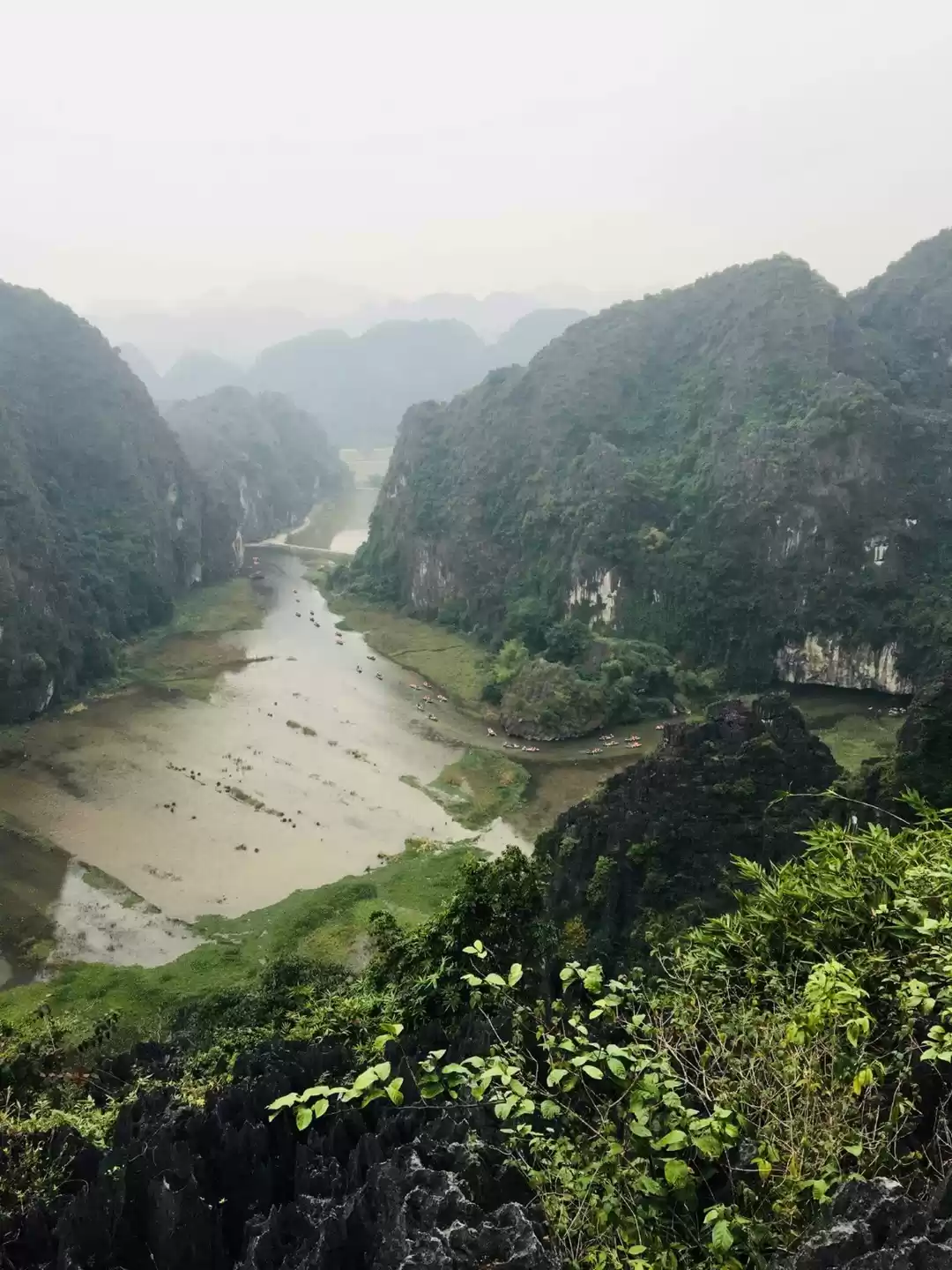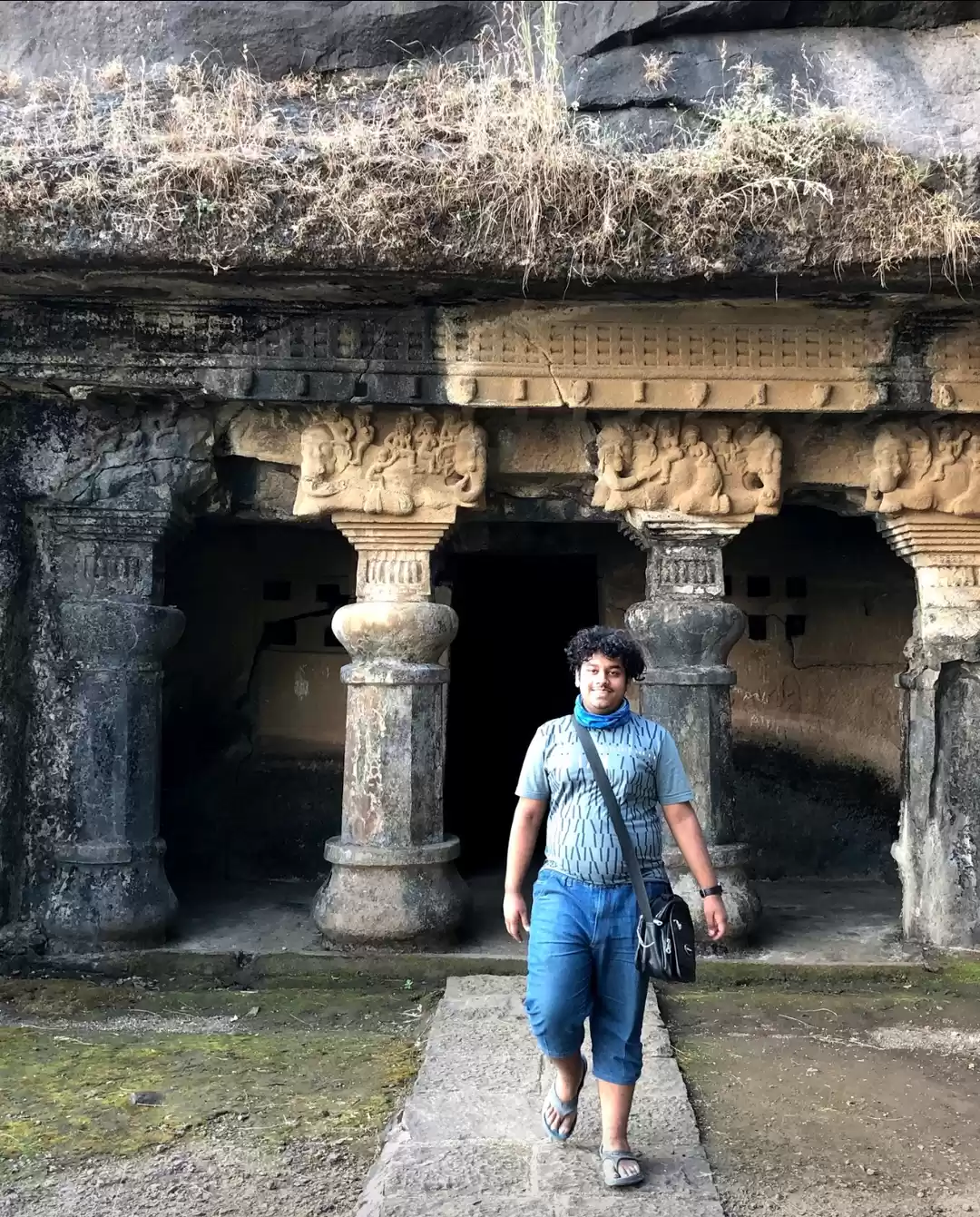If you are looking for a unique and offbeat destination in India, the Barabar Caves in Bihar are a perfect choice. These are the oldest rock-cut caves in India, dating back to the Maurya Empire, and have a fascinating history, culture, and architecture.
The Barabar Caves are also famous for their echo effect, which lasts for three minutes and creates a surreal experience. Moreover, the Barabar Caves have been featured in two books, A Passage to India by E. M. Forster, and The Mahabharata Secret by Christopher C. Doyle, which add to their mystery and allure. In this article, we will take you on a journey to the Barabar Caves, and reveal their hidden secrets.
History and Significance of the Barabar Caves
The Barabar Caves are located in the Makhdumpur region of Jehanabad district, Bihar, about 60 km from Patna, the capital city of Bihar. They are situated in the Barabar hills, which are part of the Nagarjuni hills range. The Barabar Caves are the oldest surviving rock-cut caves in India, dating back to the Maurya Empire (322 BCE - 185 BCE), which was one of the largest and most powerful empires in ancient India, and ruled by the legendary kings Chandragupta Maurya and Ashoka.
The Barabar Caves were carved out of granite rocks, and have a highly polished internal surface, which gives them a smooth and shiny appearance. The Barabar Caves were originally dedicated to the Ajivika sect, a contemporary of Buddhism and Jainism, and one of the ancient Indian schools of philosophy. The Ajivika sect was founded by Makkhali Gosala, a friend and rival of Gautama Buddha and Mahavira, the founders of Buddhism and Jainism respectively. The Ajivika sect believed in determinism, fatalism, and the absence of free will, and practiced asceticism, meditation, and renunciation.

The Barabar Caves have four inscriptions, which are the earliest examples of Indian writing, and the source of information about the Mauryan administration, religion, and culture. The inscriptions are in the Brahmi script, and mention the names of the Mauryan rulers, especially Ashoka (268 BCE - 232 BCE) and Dasharatha Maurya (232 BCE - 224 BCE), who were the grandson and great-grandson of Chandragupta Maurya respectively. Ashoka is considered as one of the greatest and most benevolent rulers in history, who embraced Buddhism after witnessing the horrors of war, and propagated peace, tolerance, and compassion throughout his empire and beyond. Dasharatha Maurya was the last effective ruler of the Maurya Empire, who continued the legacy of Ashoka, and donated the caves to the Ajivika sect.
Architecture and Art of the Barabar Caves
The Barabar Caves consist of seven caves, four in the Barabar hills, and three in the Nagarjuni hills, which are sometimes considered as part of the Barabar Caves. The four caves in the Barabar hills are Lomas Rishi Cave, Sudama Cave, Karan Chaupar Cave, and Vishwakarma Cave. The three caves in the Nagarjuni hills are Gopi Cave, Vapiya-ka-Kubha Cave, and Vadathi-ka-Kubha Cave. The caves have different sizes, shapes, and designs, but share some common features, such as the rectangular hall, the circular chamber, the arched entrance, and the polished surface.

The most famous and impressive cave among the Barabar Caves is the Lomas Rishi Cave, which has the earliest example of the chaitya arch or chandrashala, a semi-circular motif that resembles a horseshoe, and is characteristic of Buddhist and Jain cave temples. The chaitya arch is carved on the facade of the cave, and has intricate patterns of elephants, flowers, and geometric shapes. The Lomas Rishi Cave also has an inscription of Ashoka, which states that the cave was donated by him to the Ajivika sect.
The other caves in the Barabar hills are Sudama Cave, which is the largest and the oldest cave, and has two inscriptions of Ashoka and Dasharatha Maurya; Karan Chaupar Cave, which is a simple and plain cave, and has an inscription of Ashoka; and Vishwakarma Cave, which is also known as the Carpenter’s Cave, and has a vaulted ceiling that resembles a wooden roof. The caves in the Nagarjuni hills are Gopi Cave, which has an inscription of Dasharatha Maurya; Vapiya-ka-Kubha Cave, which has a large circular chamber and a domed ceiling; and Vadathi-ka-Kubha Cave, which has a small rectangular hall and a circular chamber.
The Barabar Caves are remarkable examples of the ancient Indian art and architecture, and reflect the skill and craftsmanship of the Mauryan sculptors and engineers. The Barabar Caves are also comparable and contrastable with other rock-cut caves in India and the world, such as the Ajanta and Ellora Caves, the Elephanta Caves, the Petra Caves, and the Longmen Grottoes, which have different styles, themes, and influences.
Religion and Culture of the Barabar Caves
The Barabar Caves are not only a historical and architectural attraction, but also a religious and cultural one. The Barabar Caves are the place of origin of the Ajivika sect, which was one of the ancient Indian schools of philosophy, and a contemporary of Buddhism and Jainism. The Ajivika sect was founded by Makkhali Gosala, who was a friend and rival of Gautama Buddha and Mahavira, the founders of Buddhism and Jainism respectively. The Ajivika sect believed in determinism, fatalism, and the absence of free will, and practiced asceticism, meditation, and renunciation.

The Ajivika sect was patronized by the Mauryan rulers, especially Ashoka and Dasharatha Maurya, who donated the caves to them, and inscribed their names and edicts on them. The Ajivika sect was also influential and popular in the ancient Indian society, and had followers from different classes and regions. However, the Ajivika sect declined and disappeared after the Maurya Empire collapsed, and was overshadowed by Buddhism and Jainism, which survived and spread throughout India and the world.
The Barabar Caves also have traces of Buddhist and Hindu sculptures and inscriptions from later periods, such as the Gupta Dynasty (320 CE - 550 CE) and the Pala Empire (750 CE - 1174 CE), which indicate the continuity and diversity of the religious and cultural traditions of the Barabar Caves. The Barabar Caves have sculptures of Buddha, Bodhisattvas, Tara, Avalokiteshvara, and other Buddhist deities, as well as inscriptions of Buddhist mantras and verses. The Barabar Caves also have sculptures of Shiva, Vishnu, Ganesha, and other Hindu deities, as well as inscriptions of Hindu hymns and prayers.

The Barabar Caves are a testimony to the rich and varied religious and cultural heritage of India, and the coexistence and interaction of different faiths and philosophies. The Barabar Caves are also a source of inspiration and insight for the seekers and scholars of the ancient Indian wisdom and spirituality.
Natural and Scenic Beauty of the Barabar Hills
The Barabar Caves are not only a historical, architectural, religious, and cultural attraction, but also a natural and scenic one. The Barabar Caves are situated in the Barabar hills, which are part of the Nagarjuni hills range, and have a height of about 400 meters. The Barabar hills are surrounded by lush green forests, fields, and rivers, and offer a panoramic view of the landscape. The Barabar hills are also home to a variety of flora and fauna, such as mango, neem, sal, bamboo, peacock, deer, monkey, and leopard.
The Barabar hills are a paradise for nature lovers and adventure seekers, who can enjoy trekking, camping, birdwatching, and photography. The Barabar hills have several trails and routes, which lead to different caves and peaks, and provide different levels of difficulty and excitement. The Barabar hills also have a temple dedicated to Shiva, called the Baba Siddhnath Temple, which is located at one of the highest peaks in the hills, and dates back to the Gupta Dynasty. The temple is a popular pilgrimage site, especially during the Shivaratri festival, and attracts thousands of devotees and tourists.
The Barabar Caves also have a unique echo effect, which is a common feature of all the caves, and is caused by the highly polished internal surface of the caves. The echo effect lasts for three minutes, and creates a surreal and magical experience. The echo effect can be heard by clapping, singing, or speaking inside the caves, and can amplify and transform the sound into different tones and frequencies. The echo effect can also be used for meditation, music, and fun, and can enhance the experience of the visitors.
The Barabar hills and caves are a perfect destination for those who want to escape the hustle and bustle of the city, and enjoy the beauty and tranquility of nature. The Barabar hills and caves are also a great place to experience the thrill and adventure of exploring the Cultural References of the Barabar Caves
The cultural references of the Barabar Caves in the two books: A Passage to India by E. M. Forster, and The Mahabharata Secret by Christopher C. Doyle, which add to their mystery and allure
The summary and analysis of the books, and how they portray and interpret the Barabar Caves, and the themes and issues they explore, such as colonialism, identity, mystery, and mythology
The impact and influence of the books on the popularity and perception of the Barabar Caves, and the challenges and opportunities for the preservation and promotion of the caves
The Barabar Caves have also inspired and intrigued many writers and artists, who have used them as a setting or a symbol for their works. The most famous and influential book that features the Barabar Caves is A Passage to India by E. M. Forster, which was published in 1924, and is considered as one of the greatest novels of the 20th century. The book is a masterpiece of literature, and a critique of the British colonial rule in India, and the relationship between the Indians and the British.
The book fictionalizes the Barabar Caves as Marabar, and uses them as a pivotal plot device, and a metaphor for the mystery and complexity of India, and the impossibility of understanding and bridging the cultural gap between the East and the West. The book revolves around the incident of an alleged assault of an Englishwoman, Adela Quested, by an Indian doctor, Aziz, inside one of the Marabar Caves, and the subsequent trial and turmoil that ensues. The book explores the themes of friendship, justice, prejudice, identity, and spirituality, and raises questions about the nature of truth, reality, and human connection.
The book has been adapted into a film, a play, and an opera, and has won many awards and accolades. The book has also increased the interest and curiosity of the readers and the visitors about the Barabar Caves, and their significance and symbolism. However, the book has also posed some challenges and risks for the conservation and management of the Barabar Caves, as some of the visitors have vandalized and damaged the caves, and have disturbed the natural and cultural heritage of the site.
Another book that features the Barabar Caves is The Mahabharata Secret by Christopher C. Doyle, which was published in 2013, and is a thriller that combines history, mythology, and science. The book is based on the premise that the Barabar Caves are one of the secret locations where the ancient Indian kings hid a powerful and dangerous weapon, which was used in the epic war of the Mahabharata, and which could destroy the world if it falls into the wrong hands.
The book follows the adventure of a group of friends, who are on a quest to find and stop a mysterious and ruthless enemy, who is after the weapon, and who is killing anyone who comes in his way. The book takes the readers on a journey across India, and reveals the secrets and mysteries of the Barabar Caves, and their connection to the Mahabharata, and the ancient Indian civilization. The book is a fast-paced and gripping read, and a blend of fiction and fact, and fantasy and reality.
The book has been well-received by the readers and the critics, and has been translated into several languages. The book has also sparked the interest and imagination of the readers and the visitors about the Barabar Caves, and their hidden and unknown aspects and potential. However, the book has also raised some concerns and controversies about the authenticity and accuracy of the information and the interpretation of the Barabar Caves, and their relation to the Mahabharata, and the ancient Indian history and culture.
The Barabar Caves are a treasure trove of history, culture, architecture, and nature, and a must-visit destination for anyone who wants to explore and experience the oldest rock-cut caves in India, and discover their hidden secrets. The Barabar Caves are a testimony to the rich and varied heritage of India, and the coexistence and interaction of different faiths and philosophies. The Barabar Caves are also a source of inspiration and insight for the seekers and scholars of the ancient Indian wisdom and spirituality.
We hope that this article has given you a comprehensive and in-depth overview of the Barabar Caves, and has motivated you to visit and explore them. The Barabar Caves are a wonder of the world, and a marvel of human creativity and ingenuity. The Barabar Caves are waiting for you to unravel their mysteries and mysteries, and to enjoy their beauty and tranquility.










